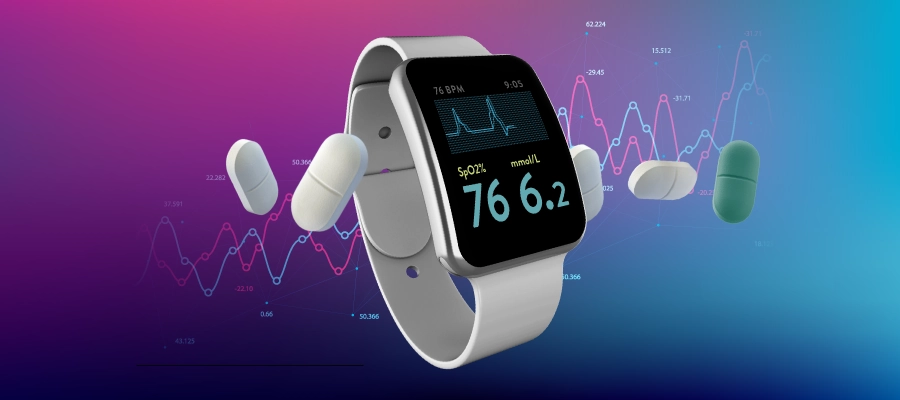
GxP Lifeline
The Patient-Centric Revolution: How Life Science Manufacturing Is Evolving for Better Outcomes
 In recent years, the life science industry has undergone a significant shift, placing patient outcomes at the forefront of manufacturing trends. This transformation is reshaping how pharmaceutical and medical device companies approach product development, production, and delivery. Let's explore how this patient-centric focus is driving innovation and improving health care outcomes.
In recent years, the life science industry has undergone a significant shift, placing patient outcomes at the forefront of manufacturing trends. This transformation is reshaping how pharmaceutical and medical device companies approach product development, production, and delivery. Let's explore how this patient-centric focus is driving innovation and improving health care outcomes.
The Power of Personalization
Gone are the days of one-size-fits-all treatments. Today's life science manufacturing is increasingly focused on personalized therapies tailored to individual patient needs. This shift is not just about creating more effective treatments; it's about empowering patients to take control of their own health journeys.
Artificial intelligence (AI) and machine learning (ML) are playing pivotal roles in the personalization revolution. These technologies are accelerating drug discovery, optimizing clinical trials, and enhancing operational efficiency. By leveraging AI in life science manufacturing, companies can analyze vast amounts of data to identify patterns and develop targeted therapies more quickly and accurately than ever before.
Want to learn more about how AI is transforming the industry? Download our trend brief "2025 Pharma and Medical Device Trends for Manufacturing Leaders" for in-depth insights.
Direct-to-Consumer: A New Paradigm
The rise of direct-to-consumer (DTC) models in pharma is another significant trend shaping patient outcomes. By cutting out intermediaries, pharmaceutical companies can offer more affordable and accessible solutions for chronic conditions. This approach not only reduces costs but also fosters a closer relationship between patients and manufacturers, leading to better adherence and more personalized care.
DTC models are particularly impactful for conditions like diabetes, obesity, and anxiety, where ongoing management and patient engagement are crucial. As these models evolve, we can expect to see more innovative approaches to patient care and product delivery.
Curious about how DTC models are changing the pharma landscape? Our trend brief offers exclusive insights – download it now to stay ahead of the curve.
The Convergence of Drugs and Devices
Another exciting development in life science manufacturing is the rise of drug-device combination products. These innovative solutions blur the lines between pharmaceuticals and medical devices, offering new ways to improve patient safety and treatment adherence.
Combination products, such as smart inhalers or drug-eluting stents, represent a fusion of therapeutic and diagnostic capabilities. They not only deliver medication but also monitor usage and efficacy, providing valuable data to both patients and health care providers. This convergence is particularly significant in the context of personalized medicine, where tailored treatments and real-time monitoring can dramatically improve patient outcomes.
To learn more about the impact of combination products on pharma patient outcomes, download our comprehensive trend brief.
Advanced Manufacturing Technologies
The quest for better patient outcomes is also driving advancements in manufacturing technologies. Additive manufacturing, or 3D printing, is opening up new possibilities for creating customized medical devices and even personalized drug dosages. This technology allows for on-demand production of complex components, potentially revolutionizing the supply chain and making personalized treatments more accessible.
Moreover, the standardization of production processes, particularly in cell and gene therapies, is helping to scale up these cutting-edge treatments. By creating more efficient and reproducible manufacturing methods, the industry is working to make these life-changing therapies available to a broader patient population.
The Road Ahead
As we look to the future, it's clear that the focus on patient outcomes will continue to drive innovation in life science manufacturing. From AI-powered drug discovery to personalized 3D-printed devices, the industry is leveraging technology to create more effective, accessible, and patient-friendly solutions.
However, this transformation also brings challenges. Regulatory frameworks must evolve to keep pace with technological advancements, and companies must invest in digital infrastructure to support these new manufacturing paradigms.
For manufacturing leaders in the life sciences, staying ahead of these trends is crucial. By embracing patient-centric approaches and leveraging cutting-edge technologies, companies can not only improve outcomes but also gain a competitive edge in an increasingly complex market.
Ready to dive deeper into these transformative trends? Download our comprehensive trend brief "Pharma and Medical Device Trends for Manufacturing Leaders" to equip yourself with the knowledge needed to navigate the future of life science manufacturing.
Conclusion
The focus on patient outcomes is reshaping every aspect of life science manufacturing. From personalized therapies to innovative delivery methods, the industry is evolving to meet the needs of individual patients more effectively than ever before. As we move forward, those who can adapt to these changes and put patients at the center of their manufacturing strategies will be best positioned to succeed in this new era of health care.

